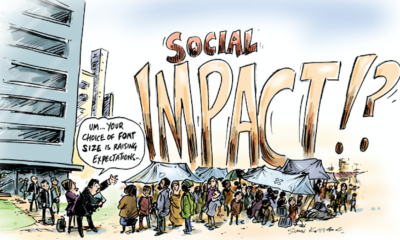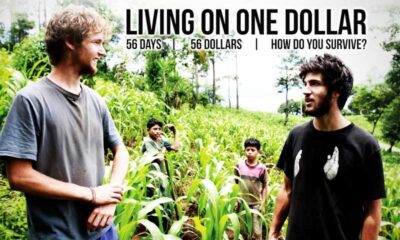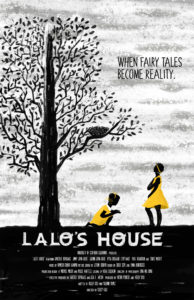Filmmakers
Filmmakers are Public Servants

There are many ways to look at films, and to have conversations about what we as filmmakers do and ought to do. The conversation is usually centered around artistry, business and entertainment – but only rarely is film discussed as an inherent good for society.
Film is Art. Film is Commerce. Film is Entertainment. Film is Storytelling. Film is Media. Film is Technology. Film is History. And – that is my proposition – Film is a Service to the Public.
Film as Art
Film has lots of aspects – and it is each and every aspect that makes it such a unique form of expression. When we think about Film as Art, we might think about the Arthouse realm, the experimental and Avant-Garde films, the films that push the envelope. Many of us independent filmmakers want to create art or self-identify as artists. We are the creative people, the ones with crazy ideas that provoke and inspire, the ones that are not afraid to express their feelings through the media they create. Films are created by artists – oftentimes dozens or hundreds of artists in various disciplines and with varying skillsets that compliment each other in the collaborative environment that filmmaking provides. And deep down, nearly every filmmaker hopes to create something that will be seen as a work of art.
Film as Commerce
Great power necessarily implies great responsibility
Closely tied to art – and oftentimes mistakenly seen as its polar opposite – is the commercial aspect of filmmaking. Films are expensive to make; they employ large numbers of specialized, experienced people, they incur a great deal of rental expenses in equipment, design materials and locations, and they take many months to complete. For that matter, films are subject to investment and financing; someone needs to take a relatively high financial risk in putting together the budget for said film. The investment aspect goes hand in hand with a profit motive, which in turn motivates a lot of decision making: The more a film costs, the more it needs to be clear, accessible, entertaining, and spectacular … oftentimes sacrificing creative wishes from the makers in order to allow a success at the box office and raise the filmmaker’s chances of being financed for their next film. Not seldomly these budgets are in the millions – an extraordinary sum for something as unpredictable as a story being told.
-Lord Melbourne, 1817
Film as Storytelling
When we watch narrative films, our deep desire of telling stories and hearing stories is being fulfilled. We are able to experience life vicariously through the eyes of someone else; externalize our internal moral codex and re-evaluate our emotions based on the stories we hear and see. Films communicate stories in a multidimensional way, transcending the parallel storytelling abilities of just about every other medium by far. Films can tell stories that books and theater plays can only deliver in far greater time spans: Film compresses visual and auditive information about characters, surroundings, time spans and relationships in a tightly packed multi-level narrative that entertains us.
Film as Entertainment
When we consider what film initially replaced – the Vaudeville theater, the lowbrow entertainment choice of the population – it becomes apparent that film still has a dominant role in the modern entertainment world. We sometimes want to numb ourselves from our personal lives and just be taken away in a strong narrative, become one with the silverscreen. We like to laugh and be entertained, and keep exploring possibilities on spending our free time as much as possible with entertainment of various media.
Film as Media
By being able to deliver information in analog and digital forms, both on an auditive and visual level, film is a medium with high information density and a heritage of other media forms, such as the theater, the novel and the realm of photography. Film is a communication device that can be delivered through various media outlets; in our modern world we can choose between cinema, TV, online services on Computers and soon interactive VR experiences as our means of receiving films. These technologies are indicative of the place that film has in our society.
Film as Technology
Being able to process motion out of 24 single images per second is part of why cinema works in humans. Capturing light on photosensitive emulsions or electronic image sensors allows for a reproduction of the moving image. Cinema was, first and foremost in its initial stages, a series of technological breakthroughs and developments: Muybridge’s capturing of discrete motion on media; Edison’s streamlined camera system, the Lumiere’s camera-projection hybrid that gave name to the field of Cinematography: We’ve seen film develop technologically from the humble beginnings in the 1890s all the way to an incredible diversity of ever-advanced capturing and reproduction formats in analog and digital realms.
Film as History
More than 120 years have passed since the inception of cinema technology, and in that vast time span, human history has seen two world wars and technological shifts of a massive scale – all of which was recorded on film. Film has a history of its own. Film has historical movements and streams, schools of thought and approach. Film interacts with other historical art movements and we can learn quite a lot about an era by watching films made during that time. We can study the historical succession of various master filmmakers and how each of them influenced one another. Film depicts and reproduces our political and social history.
The above approaches to filmmaking and film consumption are only a selection of possible viewpoints, but give a good overview of how we perceive film production as a field of interest and as an occupation.
What none of these perspectives pays enough attention to – and that is the case “out in the field” as well as in film school – is the power that film has on society. Films have triggered social change – like the outburst of racism after “Birth of a Nation” or the questioning and eventual dismantling of the Super-Size fast food as a result of the popular documentary “Super Size Me”. This is the area that we are most interested in, and that’s why we created a magazine to have a platform for exploring this incredible potential in film. Films that are made for mass audiences – anything north of a budget of a few hundred thousand dollars could easily be considered “mass media” – can have an impact on its audience. The filmmaker and producers become communicators to a huge amount of people, regardless of their training in politics or sociology.
That’s why I suggest a shift in perception and self-image: A filmmaker should not just think of themselves as an entertainer or artist, but first and foremost as a benefactor to the audience: The filmmaker as a public servant.
Film as a Service to the Public
Just for the mere fact that we create films for a big number of people, we need to be conscious of what we are doing: How much of our own bias we are including in our film. How many assumptions are we making about life when creating stories? How paternalistic are we when telling other people’s real stories of hope and suffering, and how much of their story do we actually understand?
How influenced are we as filmmakers by the ideology that we have been indoctrinated with by the society we grew up in, and to what extent are we reproducing that ideology? We have to take a step back and look at oursevles: Who are we? Why are we making films? What is the ultimate goal here?
We as media makers have immense power over the people that consume our media, and nearly 100 years of research in the fields of sociology, psychology, media studies and film studies confirms this assessment. It is important to not just be aware of that power, but also to use it with responsibility.
We can therefore say: With a powerful global film industry comes a global responsibility. This responsibility is to be taken seriously not just by the filmmakers that create the films, but also by the studios that develop these films, by the writers that take on the responsibility of dreaming up stories that are infused with ideologies, by the production companies that make films a reality, and by the distributors that empower film impact through a global distribution model.
Redefining the Identity of the Filmmaker as a Public Servant
As filmmakers, we have certain shared identities that come with the profession. Each filmmaker has their unique priorities and values, so the composition and prioritization of these identities varies greatly. The possibly most prevalent identifiers for filmmakers are as artists or as storytellers, the much-desired label of the “auteur”. What we have seen throughout this paper is that film is impactful; film can change people and can change the world in ever so small increments. That’s why I think it is important to redefine, repurpose, restructure the idea that we have of the prototypical filmmaker: Not someone who goes and creates art for their own liking, gets respect for their personal wealth and power, who walks the red carpet of festivals to go to bed feeling accomplished and admired.
The prototypical filmmaker in our minds should be a person that gets up in the morning to serve the public. We have grown cynical of the term “public servant” because we associate corruption, bureaucracy and self-serving interests with it; the “public servant” in our minds is often synonymous with politicians that deviate from the ideal.
Nevertheless, it is the most accurate description for what a filmmaker should be doing: Creating useful and powerful media that allows its audiences to be reflective, critically thinking individuals.
Filmmakers
Out of the Basement: The Social Impact of ‘Parasite’

When Bong Joon-ho’s Parasite won multiple Oscars at this past weekend’s 92nd Academy Awards, the reaction was one of almost unanimous joy from the attendees and much of the American audience. Setting aside the remarkable achievement of a South Korean movie being the first to win Best Picture, this was due to the fact that so many people have been able to identify with Bong’s film, engaging in its central metaphor(s) in their own individual ways. Everyone from public school students to Chrissy Teigen have expressed their affection for the film on social media, proving that the movie has reached an impressively broad audience. The irony of these reactions is noting how each viewer sees themselves in the film without critique—those public school students find nothing wrong with the extreme lengths the movie’s poor family goes to, and wealthy celebrities praise the movie one minute while blithely discussing their personal excesses the next. Parasite is a film about class with a capital “C,” not a polemic but an honest and unflinching satire that targets everyone trapped within the bonds of capitalism.
Part of Parasite’s cleverness in its social commentary is how it depicts each class in such a way as to support the viewer’s inherent biases. If you’re in the middle-to-lower classes, you find the Kim’s crafty and charming, and echo their critiques of the Park’s obscene wealth and ignorance. If you’re a part of the upper class, you empathize with the Park’s juggling of responsibilities while indulging in their wealth, and have a natural suspicion toward (if not revulsion of) the poor. If you have a foot in both worlds, like housekeeper Moon-gwang and her husband Geun-sae, you can understand how the two of them wish to not upset the balance, so that they can secretly and quietly profit. All throughout Parasite, there’s a point of view to lock onto.
The point of the film is not to single out one of these groups as villainous, but to show how they’re part of a system that is the true source of evil. The movie has been criticized for lacking a person (or persons) to easily blame, which would of course be more comforting dramatically. Bong (along with co-writer Han Jin-won) instead makes the invisible systems of class and capitalism the true culprit, which is seen most prominently at the end of the film. All the characters are present at the same party, whether as hosts, guests, help, or uninvited crashers, and each class group suffers a mortal loss. It’s all part of the tension built throughout the movie coming to a head, yet there’s an inevitability to these deaths as well, a price each group inadvertently pays to keep the corrupt system they’re all a part of running. In this fashion, the movie is reminiscent of several works of dystopian fiction, such as Shirley Jackson’s “The Lottery,” and Aldous Huxley’s “Brave New World.” The film particularly recalls Ursula K. Le Guin’s short story “The Ones Who Walk Away from Omelas,” in which a utopian society is dependent on the continual torture and misery of a single child. Every system demands sacrifice, and Bong and Han make clear that that sacrifice is paid many times over.
The real twist of the knife in Parasite is the epilogue, which reveals that the real point of the class and capitalist systems is to keep as many people in their place as possible. The Park’s remain wealthy, and easily move away from their old house. The Kim’s remain in their same squalid hovel, with their patriarch now stuck in the basement hideaway of the Park’s old home. In “Omelas,” the tortured child is kept in a basement, as well, and where that story tells of individuals who reject that system and choose to leave it, Parasite shows that everyone has chosen to stay, with the erroneous belief that they can eventually change their place. The film’s intense relatability is likely the main reason for it being so beloved, yet it’s the messages it sneaks in that will hopefully be its most lasting social impact. All of us are still trapped within the system, but at least the secret of how it fails us and how it lies has managed to escape the basement. Let’s hope we can eventually escape, too.
Filmmakers
What are the challenges of filming a foreign culture?

Filming a foreign culture is not like filming your own. There are a lot of challenges that are faced by people to film a foreign culture. One of the basic reasons is that you may not know much about that culture, which will act as a drawback when trying to accurately record it. It is not about the niche of the location, but the reality of it and where that takes us. When you film culture, you must have a great understanding of it. Therefore, you should study it to get a good understanding of the nuances of the culture.
Films have a huge impact on other societies, and if your film lacks the essence of the culture, it won’t be able to give a good impression to your viewers. A lot of people get overwhelmed by other cultures and their uniqueness, most of the times getting an idea about other cultures through film, television, and the internet. Be it culture or any other information, filming has played a huge role in cultivating an impression on the minds and hearts of the people.
Filming Foreign Cultures – A Challenge
Filming in foreign countries is difficult because penetrating deep into the society of any country and culture requires a good understanding of the subject. Having that understanding can alleviate these hurdles.
Seeing the Foreign Culture Through the Eyes of the Camera
Most of us get the an idea of foreign cultures from media representations, this is because we cannot experiences all the worlds cultures for ourselves. That’s why people use social media and other internet platforms to learn about different cultures around the world. That is why whatever you make, people will see, and start believing. Which is why there is a huge responsibility to show different cultures accurately.
Challenges Faced During Filming
When you take ownership of showing the world different foreign cultures, you must make sure that everything is authentic. Made up stories won’t do because they will have a bad impact on the culture but also your credibility. That is why you should try to keep things real and accurate.
Originality
Keeping everything in its original state is the best thing video maker can do. Uniqueness and creativity are acceptable, but when the things start getting faux, the real essence gets lost, which is why it’s important preserve things in their original form.
Money and Finances
For film shooting in foreign countries, a lot of money and financial aids are required. Very good artists don’t get the opportunity to use their abilities because they don’t have enough money to film. For productive and creative filmmaking you need money, if that’s not there the problems are obvious.
Video Making on Demand
If there is a demand for a particular story, everyone will try to make videos on that subject. Sometimes, in these cases, the real story gets hidden. Many times, people do not film what is needed because they re too busy filming what is trending. This affects the film industry and the filmmakers as well.
Lack of Creativity
Lack of creativity is no doubt a huge challenge for the film making industry. Sequels and remakes of the videos are not something in demand and that demeans the meaning of creativity. If you want to make a statement, you must show how creative you are. This will help you get to the limelight in no time.
The film industry is progressing at a very fast pace and with great power comes huge responsibility, that’s what we all need to understand. Admit the fact that what you portray will be saved forever, and that slight irresponsibility can ruin another culture, which should not be the intention of anyone.
This article was written by William Roy, check out his website Movie Trivia
Academia
What is USC’ Media Institute for Social Change?
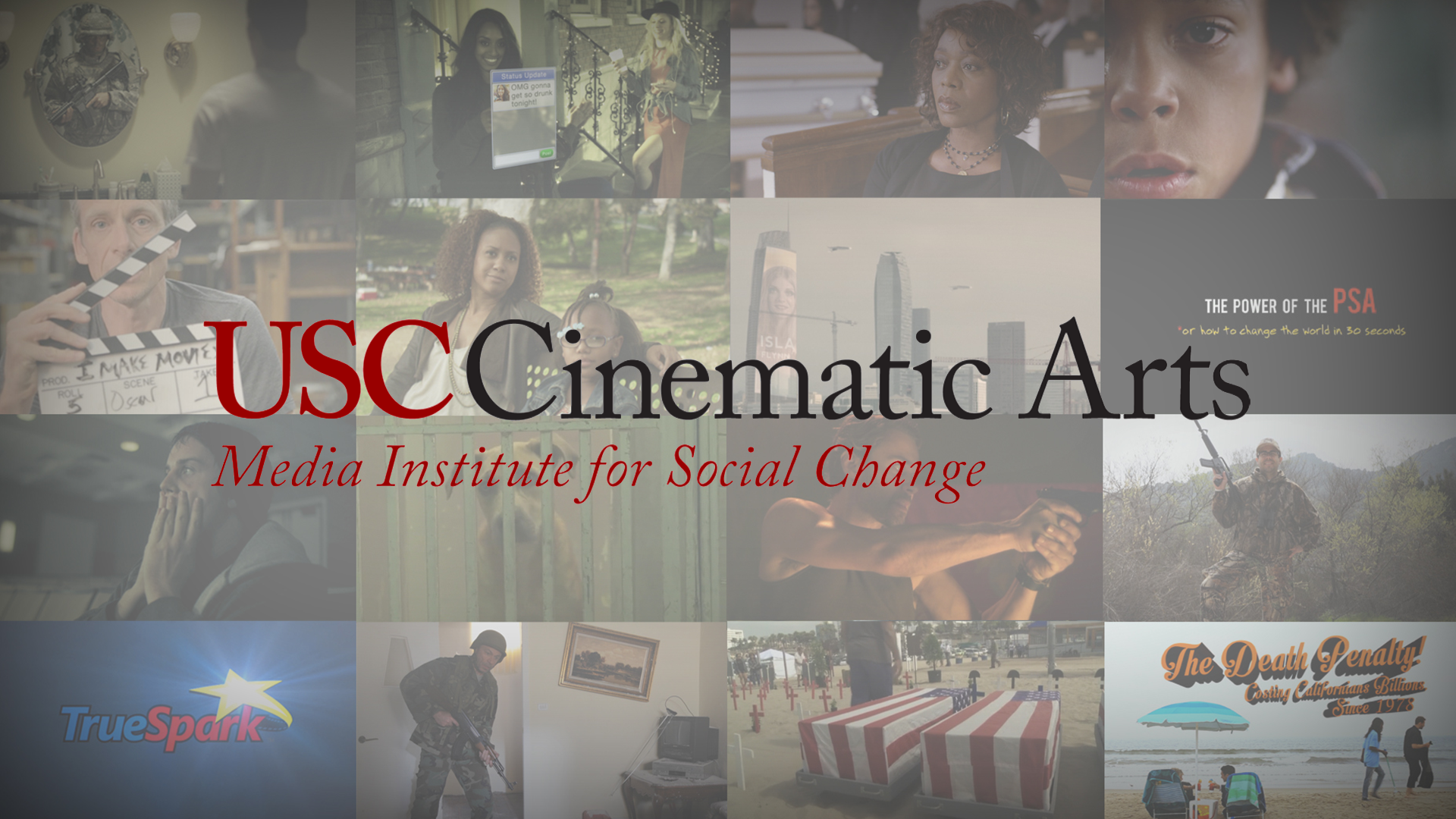
The Media Institute for Social Change, known as MISC, is a production and research institute at the USC School of Cinematic Arts focused on using media as a tool for effecting social change. Founded in 2013 by Michael Taylor, a producer and Professor in the School’s famed Film & Television Production Division, the MISC maxim is that “entertainment can change the world.” It spreads this message by producing illustrative content, and by mentoring student projects, awarding scholarships and leading research. “We are training the next generation of filmmakers to weave social issues into their films, television shows and video games,” says Taylor. “As creators the work we do has a huge impact on our culture and that gives us an opportunity to influence good outcomes.”
In recent years MISC has partnered with organizations including Save the Children, National Institutes of Health and Operation Gratitude, and creative companies like Giorgio Armani, the Motion Picture Association of America and FilmAid, to create groundbreaking work that have important social issues woven into the narrative. MISC also worked with USC’s Keck School of Medicine to create Big Data: Biomedicine a film that shows how crucial big data has become to creating breakthroughs in the medical world. Other MISC films include the upcoming The Interpreter, a short film centered on an Afghan interpreter who is hunted by the Taliban, and The Pamoja Project, the story of 3 Tanzanian women who determined to help their communities by immersing themselves in the worlds of microfinance, health and education. MISC has also partnered with the app KWIPPIT to create emojis that spread social messages. Together they co-hosted the Project Hope L.A. Benefit Concert to spread awareness about the massive uptick of homelessness in Los Angeles.
The Power of the PSA or How to Change the World in 30 Seconds, which documented the institute’s collaboration with the Los Angeles CBS affiliate KCAL9 to make PSAs on gun violence, internet safety, and PTSD among veterans. Another MISC-sponsored film, Lalo’s House, was shot in Haiti with the intention of exposing the child trafficking that is rampant there and in other countries, including the United States. The short film (which is being made into a feature) was used by UNICEF to encourage stricter legislation prohibiting the exploitation of minors, and has won several awards, including a Student Academy Award.
“Our goal,” says Taylor, “is to send our students into the industry with the skills and desire to make entertainment that has positive impact on our culture.” The dream is a variety of mass-media entertainment where social messages aren’t an afterthought but are central to the storytelling.
For more about MISC and its projects, go to uscmisc.org.
-

 SIE Magazine10 years ago
SIE Magazine10 years agoWhat Makes A Masterpiece and Blockbuster Work?
-
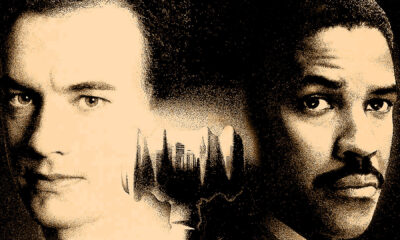
 Filmmakers10 years ago
Filmmakers10 years agoFilms That Changed The World: Philadelphia (1993)
-

 Companies7 years ago
Companies7 years agoSocial Impact Filmmaking: The How-To
-
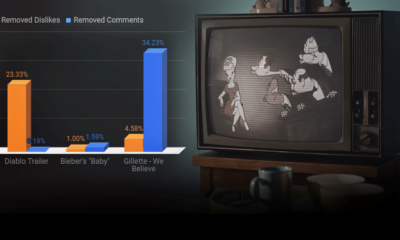
 Media Impact6 years ago
Media Impact6 years agoCan We Believe The Gillette Ad?
-

 SIE Magazine10 years ago
SIE Magazine10 years agoDie Welle and Lesson Plan: A Story Told Two Ways
-

 Academia9 years ago
Academia9 years agoFilmmaking Pitfalls in Deal-Making and Distribution
-

 Academia9 years ago
Academia9 years agoJoshua Oppenheimer: Why Filmmakers Shouldn’t Chase Impact
-

 Filmmakers10 years ago
Filmmakers10 years agoMirror Mirror: An Exploration of Self-Awareness in Recent Hollywood Films

